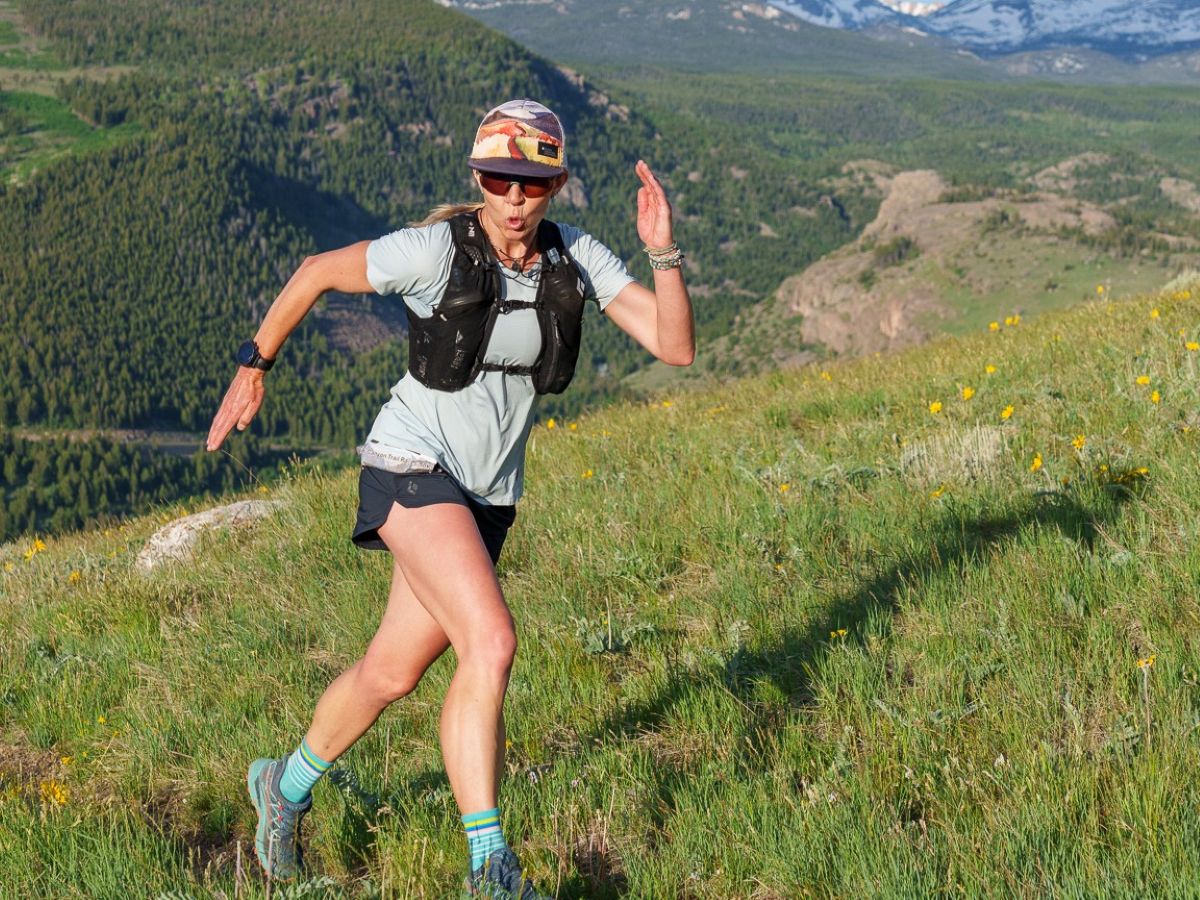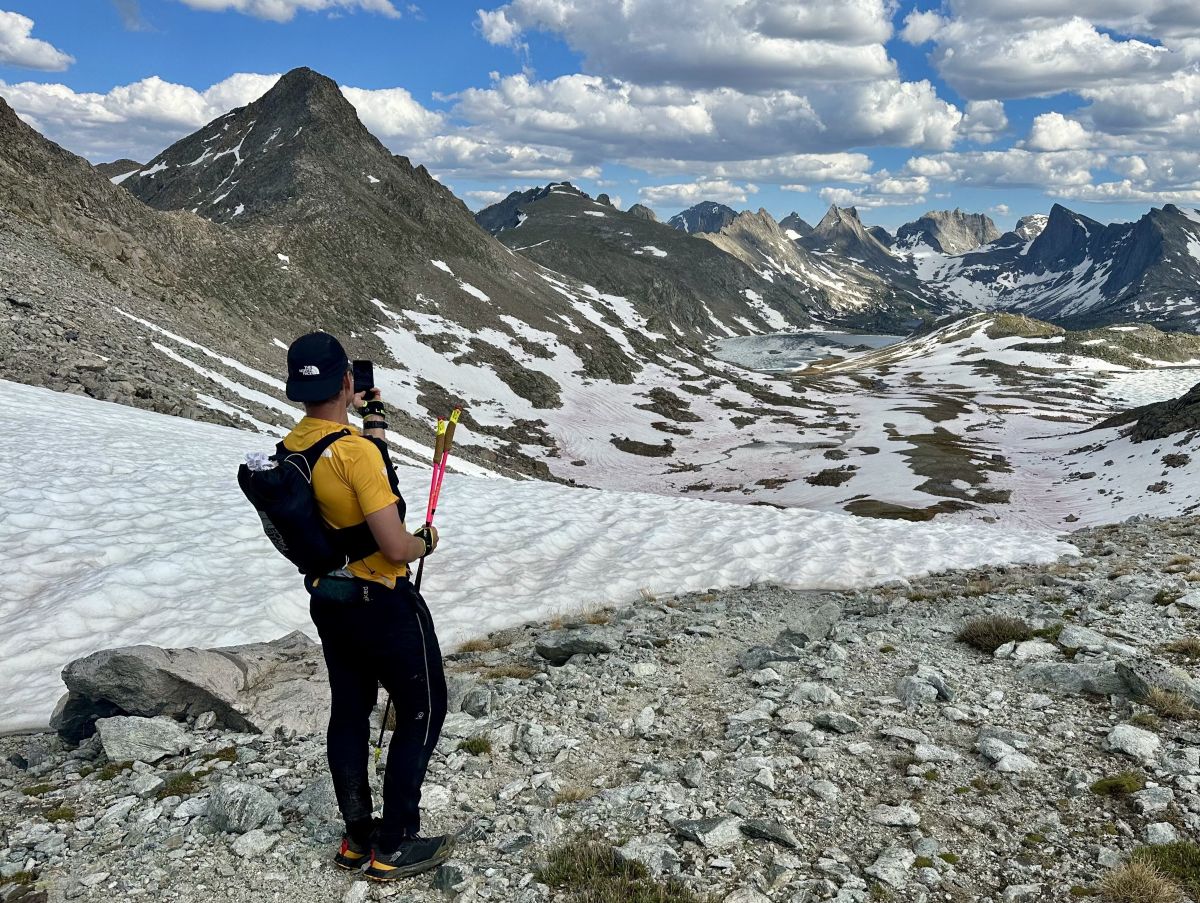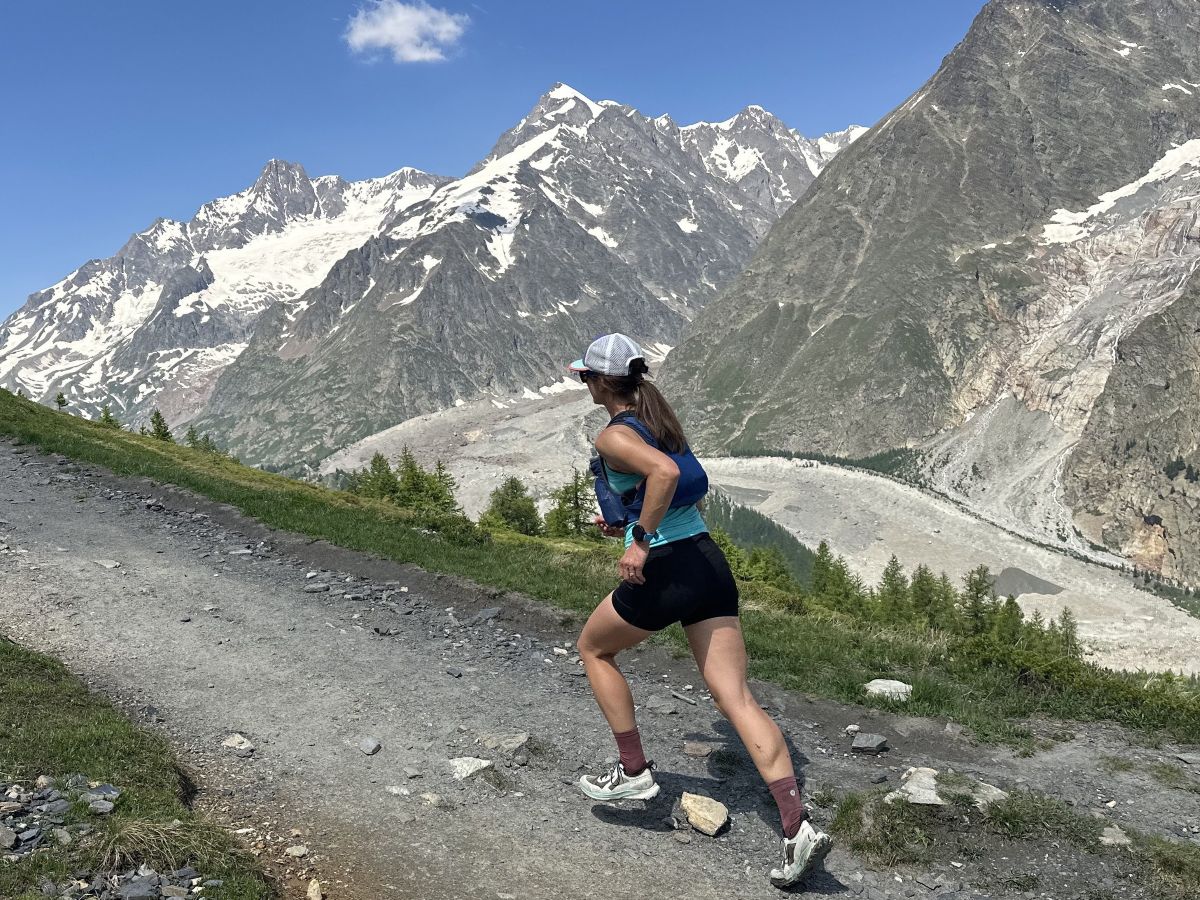In this monthly article series, ultrarunner, race director, and coach Gabe Joyes answers reader questions about anything and everything running. Learn more about this ask-the-pro column, and be sure to fill out the form below to submit your questions for a future article!
In this article, Gabe answers questions about fastpacking, choosing races, high-end trail shoes, and more.
Gabe’s Tip of the Month
Want to make your legs work better? Use your arms! Watch the tail end of a race and you will probably notice that many ultrarunners don’t lift their hands above their waist with each stride. Our legs and arms are aligned together, and the same runner who doesn’t bring their hands above their waist will have a matching short stride that lacks power. Use your hands as a cue, like how Eliud Kipchoge’s thumbs graze his chest with each stride, almost like he is brushing some crumbs off his shirt — perhaps your hands might bump the soft flasks in your running vest. Having hands and elbows that fully swing will help you have legs that work in their full range of motion as well!
Fast and Light
I am interested in fastpacking this summer. How do I cram all my camping equipment into a larger backpack and still have it be light enough to run? Please don’t tell me that running while fastpacking is just a myth. – Anonymous
To be fair, fastpacking is a loose term and just like “powerhiking” it is in the eye of the beholder. Fastpacking is definitely faster than conventional backpacking, but it won’t be your 50-kilometer race pace either. I have found that a balance must be struck on these trips between how comfortable you want to be while running, versus how comfortable you hope to be while sleeping. I have fastpacked with what I would call a full and comfortable ultralight camping setup: a 20- to 30-liter pack that weighs 15-ish pounds, and that includes a reasonably warm sleeping bag, sleeping pad, camp stove, and more. With this setup running and shuffling flats and downhills is just barely manageable, but you can basically forget about running uphill.

Your author with a 25-liter pack and a more comfort-oriented fastpacking setup. All photos courtesy of Gabe Joyes, unless otherwise noted.
I’ve also done fastpacking trips employing what I affectionately call the “shiver bivy” approach: an eight- to 12-liter pack that weighs five to 10 pounds, using a four-ounce heat-reflective emergency bivy sack paired with a five-ounce down jacket as the sleep system, while also utilizing the tiny backpack as a sleeping pad. Like the name implies, you will not be warm and comfortable while sleeping, but the lightweight and small load is excellent for running up and down mountains comfortably. This approach takes some finesse to make work, and here are a few tips for success:
- Run late into the night to the point where you are so tired you will fall asleep no matter how cold you are.
- Consume as many calories as you can right when you finish running, put on every single piece of clothing that you have, and then immediately get into the bivy to trap in warmth.
- Choose partners for this type of adventure who you don’t mind cuddling with.
- When you are too cold to sleep anymore, get up and immediately start moving with all of your warm clothes still on, and eat your “breakfast” while hiking and running. You will warm up, eventually.
- Only undertake an adventure like this with an excellent and reliable weather forecast.
Keep in mind here that the goal is not to be overly tough, but instead to complete a route that requires some sleep, in the lightest and most comfortable way possible. Ultimately this should be some level of fun, and whatever style of fastpacking is most fun for you is most definitely the style you should choose.
Choosing the Next Adventure
How do you choose your race? Is it bad to be drawn to UTMB races? Thoughts on local races and fastest known times? – Damien
I came to trail running and ultrarunning as someone looking for adventure, challenge, and a wilderness experience. For me, having a course that is aesthetic as it is rugged is crucially important. Otherwise, I just don’t feel inspired to run for a really long time. The longer I have been in the sport — particularly in the post-COVID 19 era — the more I value the community aspect of races as well.
You can get a tremendous adventure of an experience with absolutely top-class humans at all sorts of local-ish type events — Sinks Canyon Trail Races, Scout Mountain Ultras, and El Vaquero Loco are a few of my favorites. But, you can also have a very different — not better or worse — experience at something like Lavaredo Ultra Trail by UTMB or Canyons by UTMB, with tons of stoked people, lots of fanfare, and exceedingly scenic courses.
I am not going to be nitpicky and overly critical and tell you that sort of experience is bad — if you find joy in that race environment then you should absolutely get into those big races. Adventure projects, fastest known time attempts, and that sort of thing are amazing for creating your own experience, and can involve community if you have friends and loved ones that are willing to support you as well. When I ran for 180 miles from Lander to Jackson, Wyoming, over three days, I recruited all sorts of friends to pace and support me and created an unforgettable community experience! Ultimately, my best advice here is don’t overthink it: try a variety of events/goals and move toward the ones that bring you, and your community, the most sense of joy.
Share the Load
Hey Gabe, training question — no matter what trail mileage I do, it seems like the only things that really gets sore are my calves. I’ve been testing with some compression socks while running, and of course a robust calf warm-up, but they tend to get “pumped” on any climbs. Is this just how it is? Or do you have any tips/tricks on how to make this a little less sucky? – Amanda
The trick to avoiding that “pumped” feeling in the calves is to get the glutes and hamstrings to do more of the work. Those big posterior chain muscles have all the power and endurance for uphill running, but they are probably slacking, leaving your calves to do all the dirty work. Before your next run, try doing some “calf raises,” but see how little you can actually use your calves. See if you can lift yourself up with the glutes and hamstring to sort of get the feel of it. You’ll likely need to hold onto something for balance, and you might still use your calves a bit, but my bet is that you will definitely feel the difference. Get that neuromuscular connection set and see if you can use your glutes and hamstrings the same way while running uphill. A slightly longer stride can also help recruit those glutes and hamstrings to do their job as well. Shoes that are laced too tight, or socks that are too snug — especially over-the-calf socks — also restrict blood flow and can contribute to that pumped feeling as well.
Worth the Money?
Convince me I need $300 trail running shoes – Daniel
I’m sorry, Daniel, I just can’t do that. There are some $300 trail running shoes on the market that I am sure are probably very nice, I haven’t tried any of them yet, but I can also guarantee that there are dramatically less expensive shoes on the market that are also very nice. While undoubtedly new midsole foams and carbon plated running shoes are contributing to athletes setting course records, I can’t help but notice some of those same elite athletes also DNF races with injuries and issues — just something to keep in mind. For me, the most important attributes of trail running shoes are:
- Fit and foot lock
- Stability, in terms of lateral ankle movement
- Grip and friction
Why those three attributes? Because they all inspire confidence. If you can put on your shoes and feel safe, secure, and comfortable then they will get the job done for you — and it doesn’t take $300 to achieve this. Once you have those three shoe factors dialed in, then you can start to think about foams, plates, air pods, shocks, drop, stack heights, and more. Michael Jordan convinced me to beg my mom for very specific basketball shoes in seventh grade, and shockingly my basketball career did not take off — you’ll be even more shocked to learn it did not continue into eighth grade. As always, beware of social media and marketing hype, and instead go visit the super cool folks at your local specialty running shop and try some on!

Bryon Powell putting the lower lugs of the Brooks Catamount to the test. Photo: iRunFar/Meghan Hicks
Submit Your Questions
Send us your questions! Use the form below, or send us a message on Instagram, and we’ll consider your questions for future articles.
Call for Comments
- What do you think of Gabe’s answers to this month’s questions?
- What other questions do you have for Gabe? Send them our way!




